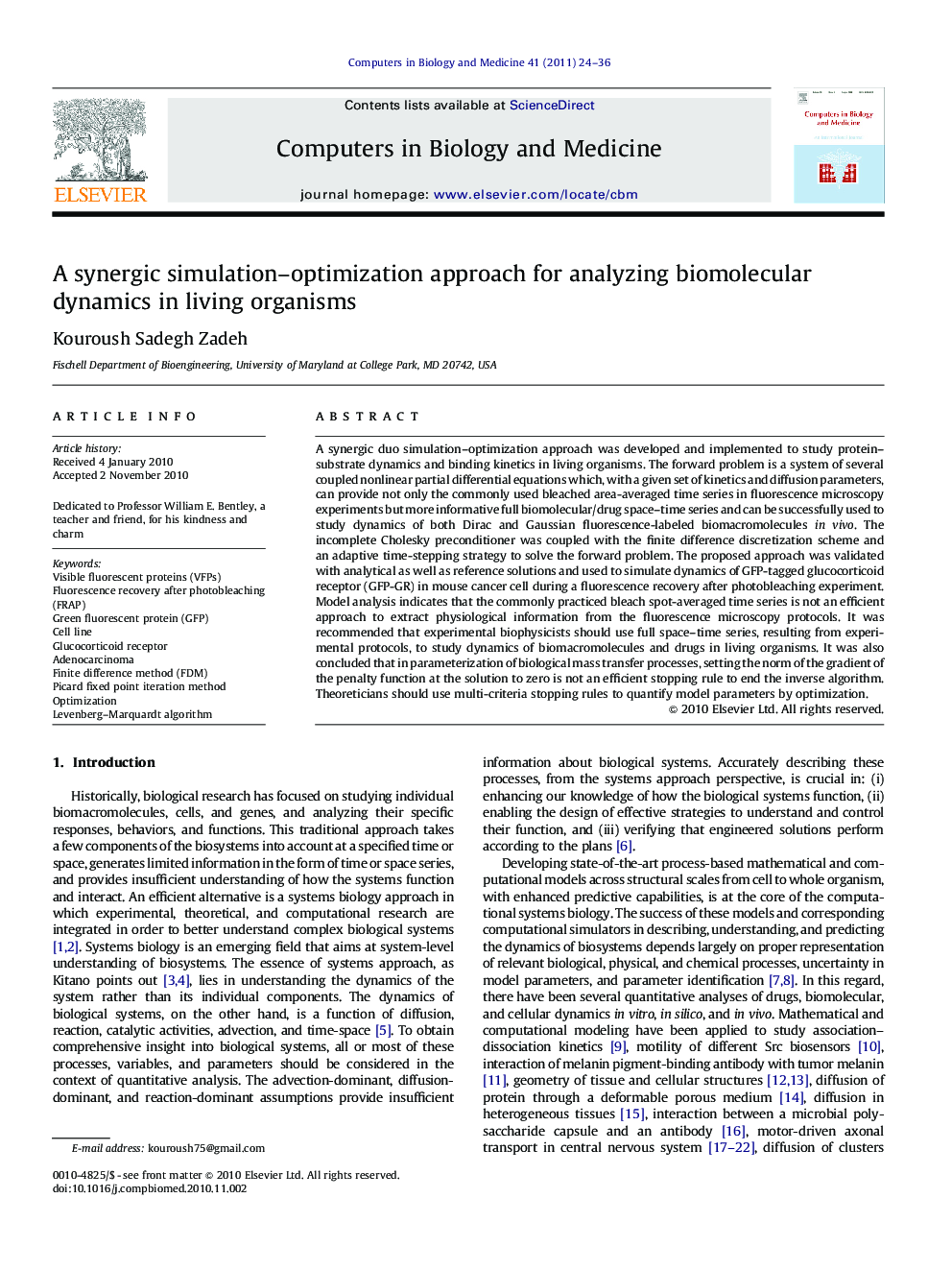| Article ID | Journal | Published Year | Pages | File Type |
|---|---|---|---|---|
| 505533 | Computers in Biology and Medicine | 2011 | 13 Pages |
A synergic duo simulation–optimization approach was developed and implemented to study protein–substrate dynamics and binding kinetics in living organisms. The forward problem is a system of several coupled nonlinear partial differential equations which, with a given set of kinetics and diffusion parameters, can provide not only the commonly used bleached area-averaged time series in fluorescence microscopy experiments but more informative full biomolecular/drug space–time series and can be successfully used to study dynamics of both Dirac and Gaussian fluorescence-labeled biomacromolecules in vivo. The incomplete Cholesky preconditioner was coupled with the finite difference discretization scheme and an adaptive time-stepping strategy to solve the forward problem. The proposed approach was validated with analytical as well as reference solutions and used to simulate dynamics of GFP-tagged glucocorticoid receptor (GFP-GR) in mouse cancer cell during a fluorescence recovery after photobleaching experiment. Model analysis indicates that the commonly practiced bleach spot-averaged time series is not an efficient approach to extract physiological information from the fluorescence microscopy protocols. It was recommended that experimental biophysicists should use full space–time series, resulting from experimental protocols, to study dynamics of biomacromolecules and drugs in living organisms. It was also concluded that in parameterization of biological mass transfer processes, setting the norm of the gradient of the penalty function at the solution to zero is not an efficient stopping rule to end the inverse algorithm. Theoreticians should use multi-criteria stopping rules to quantify model parameters by optimization.
